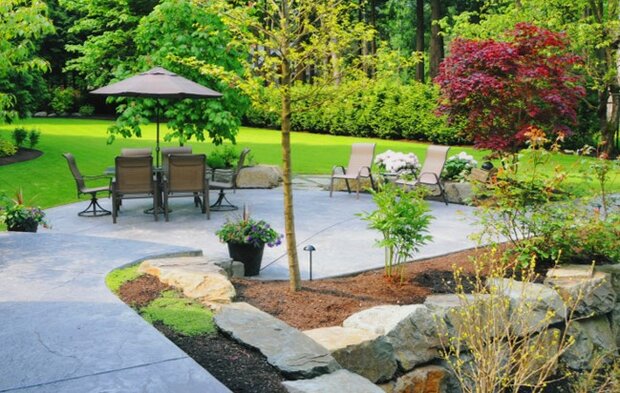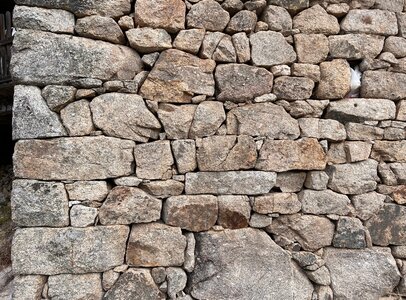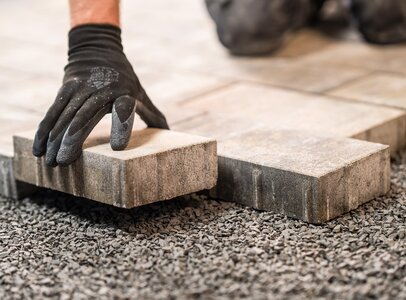Garden walls protect us against curious looks, noise from the street or wind. Walls provide excellent noise, visual and wind protection for our quiet sitting on the terrace. Depending on their height, they can also provide shade, but beware, taller walls in particular can be problematic in this respect and are subject to obtaining planning permission.
As far as noise protection is concerned, a solid wall of exposed bricks or concrete blocks, for example, works much better than a wooden fence. In fact, a solid wall can effectively absorb sound waves and thus create a barrier between noise disturbance and your garden. Plus, it is more weather resistant and requires less maintenance.
A well-designed visual division is key to creating an aesthetically pleasing and functional garden. Individual areas in the garden can either be well defined, structured or divided into different sections by low walls. Partial sightlines within the space then create visual depth as the eye recognises that there is something else behind them, making the views into the garden interesting and captivating.
Small gardens in particular benefit from a diagonal layout, that is, the positioning of the sightline across the diagonal is visually elongated and the garden then appears visually larger than it actually is.
Another decorative element can be walls and also stairs, which can be used in garden and landscape architecture to break up the too monotonous look of a garden or a large space, such as a park. For example, simple walls made of limestone, decorative masonry or a Mediterranean garden wall can be used.
Slopes and embankments are an integral part of many buildings. Their proper stabilisation is crucial to ensure their safety and long-term functioning. One effective method of stabilisation is the use of retaining walls, which provide firm support for the slope and prevent it from sliding. It is always necessary to ensure a stable foundation, the correct thickness of the wall and any drainage.
Ensuring that the wall is properly stable is crucial to its long-term durability and safety. Without a solid foundation, a freestanding wall is likely to collapse in one to two years. Therefore, it is important to properly design and construct the foundation structure before the wall is built.
We must not forget that the foundations must be laid at a so-called unfrozen depth. This is a depth at which the ground does not freeze even in winter. The non-freezing depth varies according to the type of soil, but it is usually at least 70 cm. The soil is excavated to the required depth according to the terrain and compacted with a vibrating ram. To improve stability, the foundation should be about 10 cm wider and longer than the planned wall.
Walls can be built with different building materials and construction methods. When building walls, it is always important to ensure that the construction is done correctly and that building regulations are followed. For example, to build a garden wall from lost formwork, choose the size of the fittings according to the height of the wall. A structural engineer will calculate the diameter and height of the wall or the location of the steel reinforcement (rebar). When concreting the wall, the reinforcing bars are inserted into the wet concrete in the correct position so that they will later seat into the hollow fittings.
The first layer of hollow blocks is then placed on the mortar bed. As always, the accuracy of the bottom layer determines the entire construction. There are also half-size shapes to offset the joints at the beginning or end of a row, or thicker bricks for wall piers.
Lost formwork is a technique used to strengthen and protect concrete construction. It is temporary formwork that is dismantled after concreting and can be reused elsewhere. This technique is very advantageous because it speeds up the construction process and reduces material and labour costs. The lost formwork can be erected up to a height of 1 m before Cemix 1185 concrete is poured into the cavity. Pour the last row of the lost formwork about halfway. Glue the cover boards to the top of the wall with Cemix 8260. Fill in between the cover plates with MS POLYMER flexible sealant.
The facing masonry is a building element that serves not only to protect and insulate the building, but also to its aesthetic design. It is the outer part of the wall that is visible from the outside.
When constructing a facing wall, gravel is poured into the prepared pit in layers of a total thickness of about 40 cm and compacted. This is the so-called drainage layer. Cemix 9320 drainage concrete can also be used. A sufficiently thick layer of concrete is poured on top of this layer. The thickness of each layer is determined by the height of the wall and the weight of the material used to build the wall. Our dry mixes, which come in PE packaging, are suitable so you can leave them outside and moisture will not get into the mix. Dry mixes are quickly and easily mixed with water and are ready to use straight away. After pouring, spread the concrete with an immersion vibrator to remove air bubbles. Level the surface. To prevent rapid evaporation of water, cover the concrete with construction sheeting or geotextile and allow to cure for 5 to 6 days.
And then it's time to brick! Here we go. Use mason's string to mark the lines of the planned wall. Then apply the waterproofing layer. For example, you can use Cemix 1930 waterproofing trowel (Aquastop Bitum 2K). On top of the waterproofing, apply Cemix 9015 mortar in a thick bed and accurately level the first row of bricks. Then brick up the ends of the wall first before sealing the rest of the wall. Always check with a spirit level that the wall is truly level. Follow a similar procedure when bricking with cement mortar or adhesive. However, it is important to choose the correct masonry and grouting material. For example, natural stone requires a different material than concrete, aerated concrete, or brick.
These include garden walls made of natural stone, which are usually not plastered. If man-made materials such as blocks or bricks, aerated concrete and lightweight concrete are used for non-vitrified masonry, they must be plastered to make the final wall weatherproof. If lime-sand or face bricks are used, they can serve as both facing and non- facing masonry. In both these cases, we can then omit plastering.
Masonry made of elements that are not plastered is relatively simple, visually attractive and actually saves work.
Garden walls are generally a popular feature, but before building them it is important to find out how high and where we can build them. This question is dealt with in different ways and can include objections from neighbours. It is therefore advisable to check with neighbours beforehand and check with the local council or the relevant building authority.
Garden walls or dividing walls are not slope or embankment protection! These structures are subject to special regulations and guidelines for their construction and should only be planned and carried out by professional companies.



